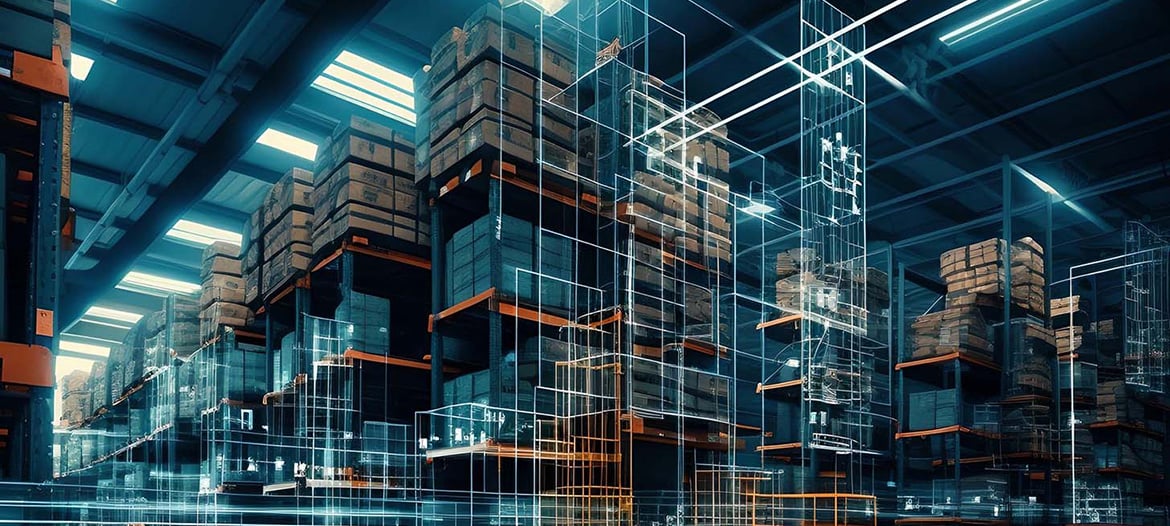Biopharma Outlook: AI & Blockchain for Seamless Real-time Monitoring & Traceability

Chandan Trehan
Lead-Digital Transformation, Supply Chains & Sustainability
Bosch USA
Many industry sectors, including pharmaceutical/life sciences, healthcare, food and others, face a critical challenge in terms of maintaining optimal temperatures as temperature-sensitive products move throughout complex global supply chains.
The global cold chain market, encompassing storage, packaging, transportation, and monitoring technologies, is on a trajectory of significant expansion, with an estimated value projected to reach USD 372.0 billion by 2029 from the 2024 valuation of USD 228.3 billion, displaying a promising Compound Annual Growth Rate (CAGR) of 10.3%.[1]
Concurrently, the global cold chain equipment market size was valued at USD 26.30 billion in 2022 and is projected to grow from USD 30.36 billion in 2023 to USD 83.34 billion by 2030, exhibiting a CAGR of 15.5% during the forecast period. North America dominated the cold chain equipment market with a share of 32.92% in 2022.[2]
Maintaining the integrity of time- and temperature-sensitive product throughout the multi-step journey of storage and transit, under rigorously defined environmental parameters is highly complex. It is imperative to safeguard product quality and adhere to regulatory compliance, thereby ensuring patient safety and product efficacy. The critical monitoring parameters throughout such high-stakes distribution networks include, among others, temperature, humidity, light, tilt, and vibration.
Today, AI-powered temperature monitoring and blockchain technology provide comprehensive cold chain traceability. For example, Bosch Truefood+[3] leverages these technologies to ensure transparency and sustainability across food and pharmaceutical supply chains. The solution combines IoT, AI, and distributed ledger technology to optimize efficiency and uphold ethical sourcing standards in food & drug safety and security.
This technological convergence improves operational efficiency and visibility, which helps to reduce risk and ensure that high-value, temperature-controlled products produced by in highly-regulated sectors can be distributed and delivered safely.
Focus on AI-powered temperature-monitoring systems
As noted, temperature-sensitive products, such as vaccines, biologic therapies, food, and other perishable goods require precise environmental conditions to maintain quality and effectiveness. Traditional temperature monitoring often relies on simple sensors or conducting periodic manual checks. This approach provides limited visibility, and the resulting delays in identifying and addressing issues increases the risk of temperature excursions that could threaten the integrity of the payload in transit.
By contrast, the use of real-time temperature monitoring systems that are powered by AI enable continuous temperature tracking. Advanced data-analytics capabilities are used to identify and model trends. These data-driven insights can then predict problems that could arise within individual shipping containers and along specific lanes during the journey. These data-driven insights are also used to proactively suggest corrective or preemptive actions to prevent or respond to temperature excursions throughout the distribution process, from manufacturing to final delivery.
For example, an AI-enabled monitoring system can detect and predict temperature deviations inside of appropriately equipped shipping containers in real time, alerting stakeholders so they can initiate remedial actions, such as adjusting cooling systems or rerouting shipments, to prevent spoilage. Such visibility is critical for ensuring that today’s life-saving therapies reach patients in optimal condition.
Focus on blockchain for end-to-end traceability and transparency
Blockchain technology — which involves the use of a decentralized digital ledger — provides immutable and transparent records of every transaction or event throughout the entire lifecycle of a given product. When integrated with AI-driven condition monitoring systems, blockchain facilitates comprehensive end-to-end traceability, ensuring that every stakeholder across the supply chain can access a fully transparent record of every single event that has occurred in the product’s lifecycle.
Such state-of-the-art integration yields several key benefits:
-
Data integrity: Blockchain ensures tamper-proof data — thereby enhancing trust among supply chain stakeholders.
-
Transparency: Every participant in the supply chain, from the manufacturer to the end consumer, can access a detailed, real-time history of the product’s conditions, ensuring timely detection of any condition-monitoring failures that may occur during the storage and distribution process.
-
Compliance: Blockchain provides an auditable trail of asset ownership and condition-monitoring data, enabling strict adherence to compliance requirements.
Integrating AI-powered temperature monitoring with blockchain is already making waves in several industries. Early adoption of blockchain-enabled temperature monitoring within the pharma/life sciences sector is already helping providers of cold chain logistics systems to guarantee that temperature-sensitive therapies remain potent and safe.
Technology integration: Don’t overlook change-management strategies
While these new technologies provide a compelling opportunity for transformation, the successful implementation of any new technology paradigm requires more than just plugging in the promising new systems. For optimal results, organizations must consider the broader picture, which includes human, technology and system elements.
-
Adopt change-management strategies: A strong change-management strategy coupled with a transparent communication strategy can help to minimize disruption, accelerate technology adoption and ensure organizational-wide alignment to goals and vision.
-
Build trust and ecosystem buy-In: For blockchain solutions to deliver full transparency, all stakeholders — including all supply chain partners and vendors, logistics providers and regulators — must be onboard to optimize trust and collaboration.
Closing thoughts
AI-powered real-time temperature monitoring systems, combined with blockchain offer an unparalleled opportunity. However, organizations must recognize that technology alone is not a panacea for underlying supply chain problems. As with any transformative initiative, it is important to address several key dimensions:
-
The human aspect: to manage expectations and provide necessary training, and ensure stakeholder alignment,
-
The technological dimension: conducting a thorough assessment of the existing IT landscape and crafting a thoughtful roadmap that enables technological adoption and transformation
-
Systemic aspects: focusing on process definition, optimization, and re-engineering.
References
[1] https://www.marketsandmarkets.com/Market-Reports/cold-chain-market-811.html
[2] https://www.fortunebusinessinsights.com/cold-chain-equipment-market-109028
[3] https://bosch-sds.com/bosch-advantage/ips-and-accelerators/bosch-truefood/







Leave a Comment